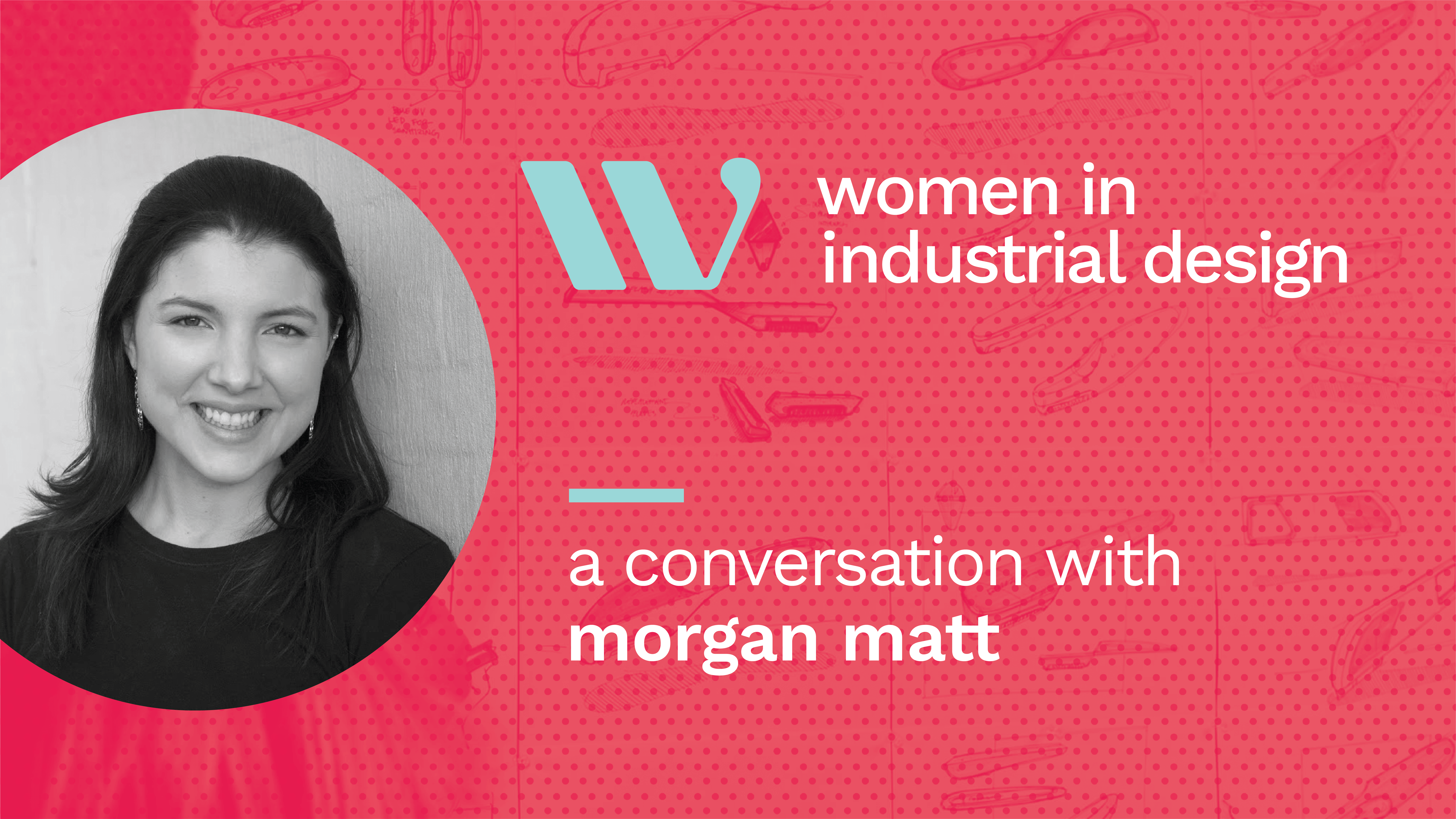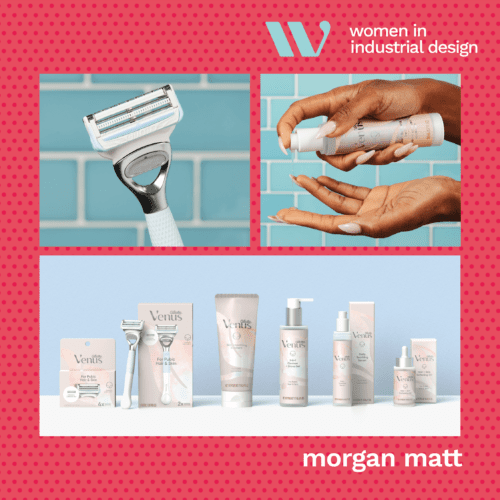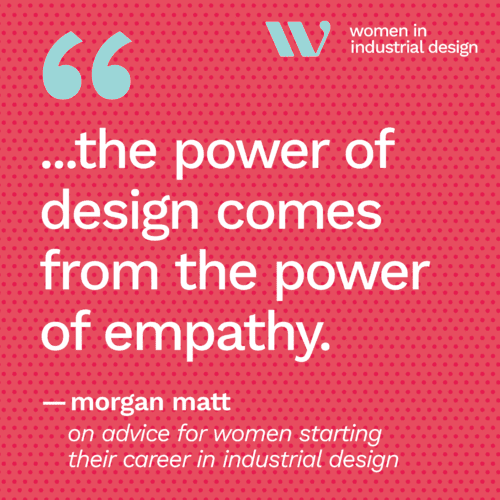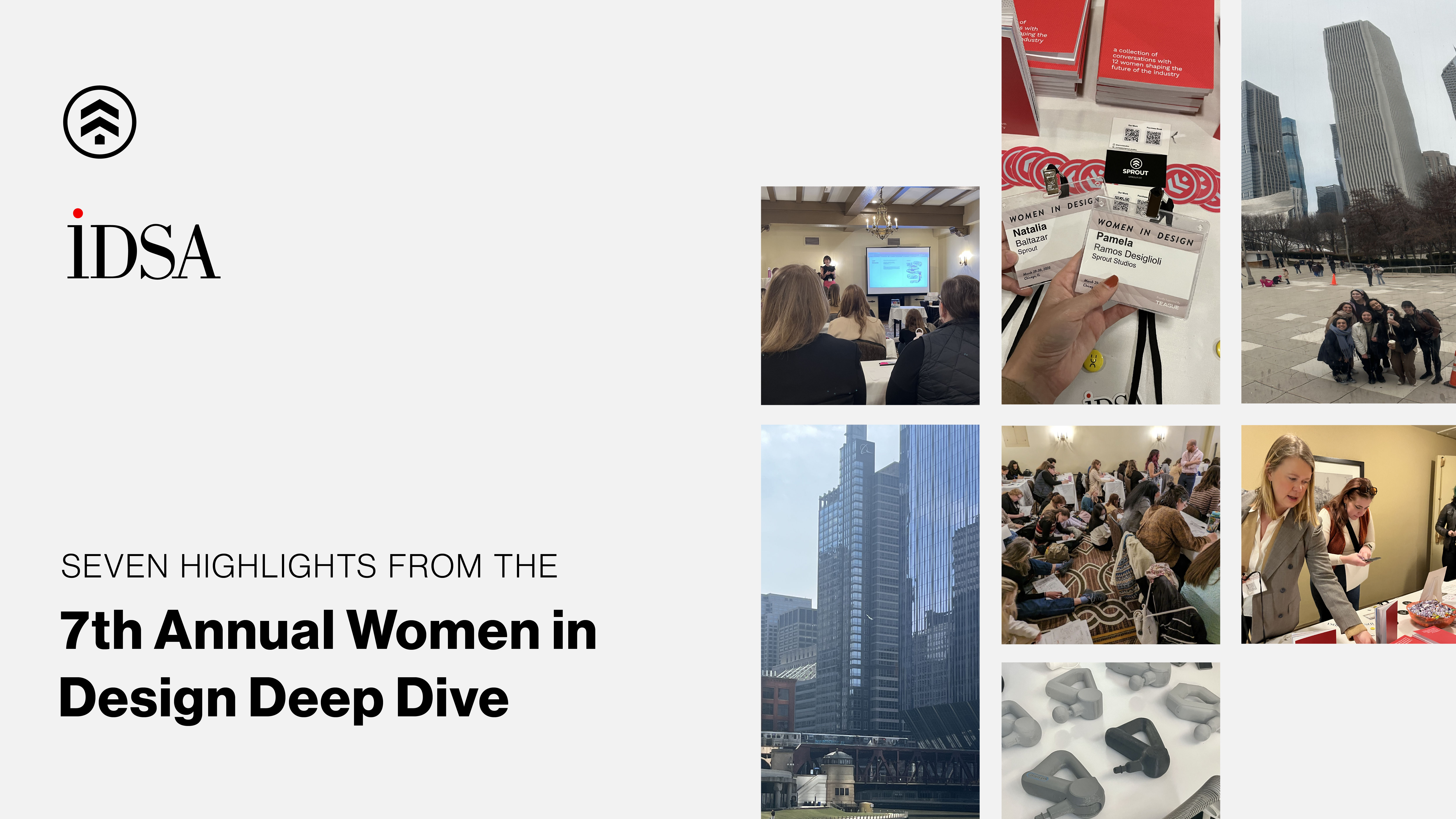Women in Industrial Design: A Conversation with Morgan Matt

For about a year now, we’ve been researching the issue of gender gap in the industrial design profession, interviewing women in the ID space to learn more about their journeys and spark conversations that activate change. This month we sat down with Morgan Matt, Senior Innovation Designer at Procter & Gamble. A 2016 graduate of Virginia Tech, Morgan has spent the last 5 years navigating the corporate world as a female designer. Passionate about bettering the design community as a whole, she spent the last few years serving as Chair of Boston’s IDSA Chapter.
In the interview, Morgan talked about the struggles she has faced in her path forward in this industry, her determination to create more seats at the table for women, and the superpower that she used to keep secret.


On the hurdles facing women getting started in industrial design.
In design school. While I loved my program at Virginia Tech, there were some challenges for sure in trying to get the one-on-one mentorship I was seeing for my male counterparts. I had to fight for it. I nearly drove myself to the ground sketching every night and struggling with CAD, well past 3am. While I did receive high remarks for my efforts, I was often met with serious judgment from my peers for it. I definitely had rumors fly that I was getting good grades for the wrong reasons. My peers contributed the success of my male classmates to their talent and assumed the professors loved them for their design work alone. That wasn’t the assumption in my case.
Pushing through and entering my senior year, I found my passion for niche women’s products and the concept of “designed by women, for women.” There was no hesitation on the subject of my thesis project: redesigning the speculum used in gynecological exams. The metal two-pronged device in use today still bears the design introduced by a male doctor in Alabama… in 1845. Women universally hate it. The design shows no empathy for its female users. It’s an uncomfortable, taboo topic, but the more I researched it, the more I knew this was something I had to address as a female designer.
Once ready to defend my thesis, I learned that there would be an entirely new set of challenges: I had to present to a panel of all male professors. How could I communicate effectively enough to provide them a complete understanding of the pain points and design decisions I was making? This was before much of the healthy conversation came about with Yona Care’s speculum design. I can’t begin to tell you the number of times I planned and then re-planned my presentation style or asked myself how comfortable I truly felt talking about it in front of a group of only men.
I would encourage women to be(come) advocates for themselves and to get close to their professors, pursue mentorship, and areas of interest in design. And there shouldn’t be any difference in the way that it’s perceived.
In the workplace. It starts with how many seats are at the table currently, especially when it comes to higher-ups. The higher up you go, the less representation you see. So young female designers do not have the mentorship that they need and deserve to jump start their career or to develop a higher level of confidence and reassurance in their hard and soft skills. That kind of connection with a strong female lead is lacking. When companies create more seats at the table, it will have a domino effect for those starting their career. We have pretty much equal representation in schools. Why is there so much less of that representation in the industry itself?
At one point I was afraid to lose my seat at the table. I had worked so hard for it and been so passionate. There’s this subconscious fear where you say, “Okay, there’s another woman entering the workforce. How many seats are left?” It’s really about saying, no, I need to be able to create this space and ask for another seat rather than being afraid of losing mine. I don’t need to be the token female on the team. I need to be part of a really equal playing field around a very diverse table. And once I get to that position, I need to pull someone else up into that space.
On the need for diversity on design teams.
Change only happens when there’s candid conversation. I have been fortunate to get the right mentorship. I’ve been able to have very candid conversations, without being labeled as self-conscious or microaggressive, or seen as someone that’s looking for a team that’s going to swing the needle all the way to the other end. It’s not about creating an all-women team. For me, it’s about (creating) the most diverse team possible.
When we talk about feminism (in industrial design) in recent years, especially on social media, the things that surface can feel intense and overwhelming. Some people feel attacked by it and it gives feminism the wrong connotation when it should be positive. Creating a table for only women is not my end goal. The goal is equality. I work on women’s razors all day and we would be lost without my male counterpart(s) working on it. Some individuals may not be the consumer demographic, but they are very much needed at the table to create the ideal design team.
Ideas for promoting change in gender culture within the industry.
From my perspective, it’s easy to get lost in the corporate world. It’s a very intelligent crowd in general. But then when you go further into a place where you’re even less represented it’s harder to speak up. Then you add on being a new hire. Opportunities to learn about leadership, presentation skills, public speaking, and developing your own level of self-confidence in these settings, are so important.
P&G has been a positive example. They advocated for a group of newly hired women, including myself, where they saw promise and really wanted to see us grow within the company. They created a women’s leadership program and sponsored it with the Boston Chamber of Commerce. It opened my eyes to the fact that leadership opportunities for women are lacking in a lot of STEM programs.
Just speaking to other women — without blinders focused on industrial design — helped me learn leadership skills I could bring back into my own company. I would encourage companies to create opportunities for women to expand their own leadership education. These skills will impact your teams in a positive way.
Advice to women starting their career in industrial design.
Learn more than ‘how to design.’ Integrate an understanding of materials, processes, and entrepreneurship into your learning. There are a lot of industrial design books that I know are kind of traditional that I love. Design for Manufacturing and Business Model Mindset are two that helped me have a voice when I entered the design workforce. A lot of students know how to design, but they don’t know how to design for manufacturing or to really understand the cost process. That perspective really helped me to stand out when I came into a large corporation. I could speak confidently not just about ideas, but also how to make them a reality.
Don’t underestimate the power of face time. As I was graduating from Virginia Tech, the chair of the industrial design program gave me a list of female graduates who had successful careers. I didn’t have a job yet. And that was something scary and strange for me, to not have a plan. So, my plan became, I’m going to contact all these women. I bought plane tickets and I literally went to their companies. Which is a little crazy in hindsight. I asked them to review my portfolio over coffee. It was a total risk. But it became a serendipitous and empathetic experience with them saying, “I see your skills. I see your personality and your portfolio. Keep in contact with me.” I ended up getting six different offers. Honestly, my portfolio wasn’t the best of the best. But these people knew my face. And they knew that I would really care about the job. I said, “I’ll work harder than anyone you’ve ever met.” I was so eager. I think people could tell.
Embrace empathy as a superpower. Empathy is something that women are often seen as less of a leader for possessing. I talk a lot about empathy and design strategy and how the power of design comes from the power of empathy. You understand your coworkers more. You’re able to understand your end-user more. You get into the soft spots of people’s hearts and that’s what sells. A lot of industries can put out a beautiful product. But if it’s not going to resonate with someone, what’s the point?
I think about my job as basically being empathetic every day. Trying to understand who I’m designing for and their pain points. What joy are they getting out of the experience in addition to the functionality of this product? From a designer’s perspective women feeling confident about expressing their empathetic understanding is extraordinarily powerful.
I’ve always believed that being a designer at the core — in your personality and design visualization — is more valuable than hard skills. Investing in someone that has a design eye will definitely open up opportunities for more individuals. Especially for women who possibly didn’t have the school environment to (develop) their CAD and sketching skills. I think companies really need to start investing in and creating a path for growth for more (hires) with a design eye and personalities with empathetic superpowers rather than putting so much weight on hard skills that can grow in time.
On staying inspired as a designer.
The number one thing I’d advocate for is just getting out into the world and gathering inspiration. I’m a frequent visitor to the MFA and ICA museums here (in Boston).
As much as it can be a double-edged sword, social media also helps me in my job. When I get to the right resources, I come into work understanding a lot more about my target demographic through things like interior design. How is my product going to fit into that home? Or what’s trending or popular in say, nail polish. How is someone’s color choice going to influence their personality for the next three weeks? And what does that mean for my CMF choices?
Finally, on the book spectrum, outside of design, I read a lot of psychology books. I really liked The Chimp Paradox. Books like these are really helpful in developing a level of confidence and understanding of your place in the workforce and your general happiness. I think the more internal work you have done, the more you can show up at work. By understanding your value in life, you’re going to produce better designs.

